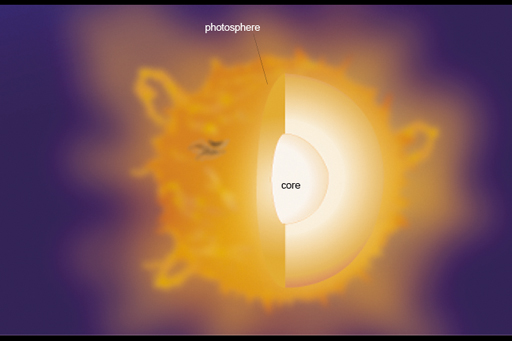2.2.3 Nuclear fusion

The reactions that take place inside stars are the source of the light and heat (energy) that the stars give out.
The reactions are the fusion of atoms together – nuclear fusion – where the nuclei of atoms are combined to form a new nucleus of different mass.
The Sun is mainly hydrogen and helium, and is gaseous throughout. The nuclear reactions occur only in the Sun’s core, deep in its centre, because the hydrogen fuel has to be at very high temperature, over 15 million K, before nuclear reactions can begin.
Main sequence stars, like the Sun, convert hydrogen to helium as you learned in What is a star?.
The two hydrogen nuclei involved in the first step of the reaction have identical positive charges, so they repel each other with greater and greater force the closer they get to each other. In order for the hydrogen nuclei to combine, they have to be close enough to interact and undergo fusion. They have to be moving rapidly to overcome the repulsion. The higher the temperature of the gas, the faster the nuclei are moving.
The higher core temperatures of stars more massive than the Sun also allow other nuclear reactions to occur that involve nuclei of heavier and heavier elements.
